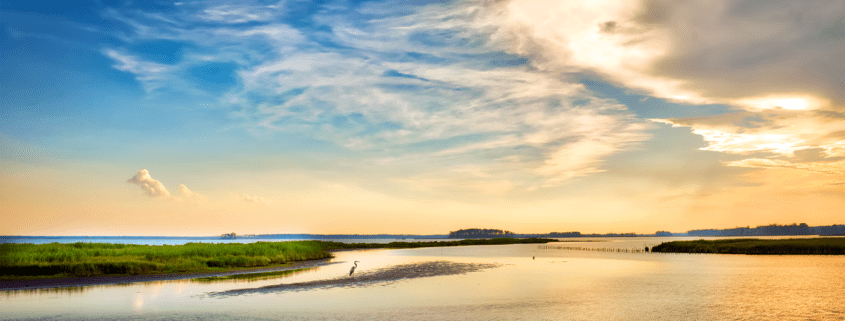Cleaning Up Chesapeake Bay – Thomas Brennan
I was fortunate to grow up around water and attend college just minutes away from the James, a river flowing down from the Appalachian Mountains and emptying into the Chesapeake Bay. I’ve lived in the Chesapeake River Basin my whole life, as do more than 18 million others. The watershed encompasses parts of six states- Delaware, Maryland, New York, Pennsylvania, Virginia, and West Virginia, as well as the District of Columbia, and spans more than 64,000miles. The bay itself is over 200 miles long, stretching from Havre de Grace, Maryland to Virginia Beach, Virginia. Joining the James are the Susquehanna, Potomac, Rappahannock, andYork Rivers, the largest rivers funneling towards the Bay; but importantly, there are more than100,000 streams, creeks, and rivers serving as tributaries. To say that the bay is important to the area is an understatement.
A 2021 Gallup Environmental Survey reports that 83% of Americans personally worry about the pollution of rivers, lakes, and reservoirs “a great deal” (53%) and “a fair amount”(30%). Awareness and action go hand in hand when people are educated and informed on how to make a difference. The challenge is harnessing that concern and turning it into a positive, desired behavior.
A Center for Watershed Protection poll was conducted with a sampling of Virginia, Maryland, and Pennsylvania residents. Among other data collected, this research surveyed residents’ knowledge and practices related to water contaminants generated from lawn fertilizer and their effect on the Chesapeake Bay. Given all respondents, 50% said they fertilize their yards an average of 1.73 times per year. As a representative sample, this tells us millions of homes are in the pursuit of a green, weed-free lawn with runoff pouring into those 100,000 tributaries towards the Chesapeake. Critically, one should note that among respondents who hired a lawn company for their lawn maintenance, only 2% cited “being environmentally friendly” as a deciding factor in selecting the business. We as a society end up faced with a population that cares deeply about the health of our waterways but is unaware of the impact they can have by utilizing environmentally friendly practices, products, and businesses. People simultaneously care for the waterways and do not understand that they contribute to the problem.
Attitudes and behaviors do not exist in a vacuum, nor do we expect them to. However, beliefs must precede a change in action if the change will be meaningful and long-lasting. Many homeowners, miles away from their closest river, do not make the connection between the fertilizer they spread on their lawn and the health of the water, fish, and waterfowl. They believe they are simply chasing a picture-perfect green lawn. A two-fold education campaign- on the interconnectedness of watersheds and environmentally safe products is crucial. Additionally, there should be increased recognition and visibility for companies creating and providing environmentally safe products. We know that a majority of Americans worry about the chemical pollution of our waters- with knowledge and education, that concern can be channeled into action.
Sources:
Brenan, Megan. “Water Pollution Remains Top Environmental Concern in U.S.” Gallup.com, Gallup, 20 Nov. 2021,https://news.gallup.com/poll/347735/water-pollution-remains-top-environmental-concern.aspx.
Center for Watershed Protection. “A Survey of Residential Nutrient Behavior in the Chesapeake Bay.”Environmental Protection Agency, ChesapeakeResearch Consortium,https://cfpub.epa.gov/npstbx/files/unep_all.pdf.
Learn more about Thomas Brennan here!



